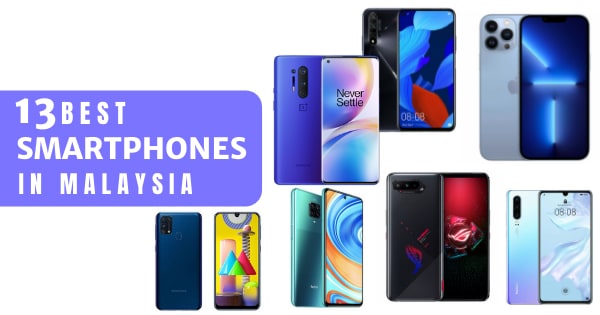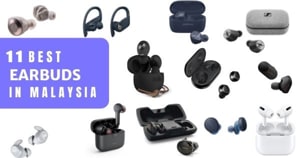Plan to upgrade your phone to one of the best Smartphones in Malaysia?
Smartphones have come a long way in terms of multi-tasking capabilities, screen resolution, cameras, etc. Even some of the best budget Smartphones in Malaysia are worth looking into!
So, whether you want a premium, mid-range or budget Smartphone, you’ll find a selection of solid options here!
Table Of Contents:
- Best Premium Smartphone
- Best Smartphone Below RM2,000
- Best Smartphone Below RM1,500
- Best Budget Smartphone Below RM1,000
- How To Choose The Best Smartphone
Our Picks
- Best Premium iPhone: iPhone 14 Pro
- Best Affordable Large-Screen iPhone: iPhone 14 Plus
- Best Premium Android Smartphone: Samsung Galaxy S23 Ultra
- Best Value-for-Money Flagship Android Smartphone: OnePlus 11
- Best Camera Setup: Xiaomi 13 Pro
- Best Telephoto Phone: Samsung Galaxy S22 Ultra 5G
- Best For Videographers: Apple iPhone 13 Pro Max
- Best Value: Xiaomi Mi 11
- Best Budget With Great Performance: Poco X4 Pro
- Best Budget With Great Camera: Redmi Note 10 Pro
- Best For Gaming: ASUS ROG Phone 5
- Best Budget For Gaming: POCO F4 GT
- Best Portable But Powerful Smartphone: iPhone 13 mini
- Best Long-lasting Battery Life: Apple iPhone 13 Pro Max
Best Premium Smartphone Malaysia
1. iPhone 14 Pro – Best Premium iPhone
To date, the iPhone 14 Pro is the latest in the long-running line of Apple smartphones. It doesn’t reinvent the wheel or offer significant upgrades from last year’s iPhone 13 Pro. But it has some solid exclusive features to tempt older iPhone users.
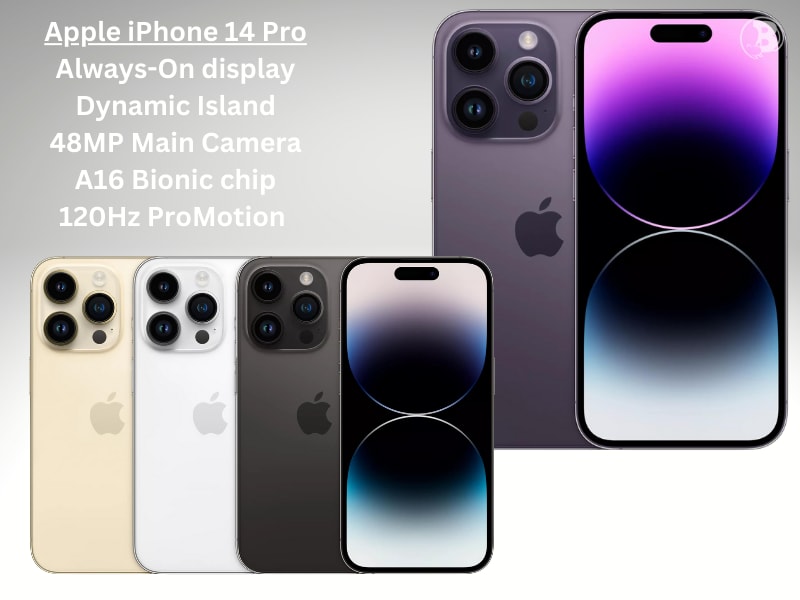
The iPhone 14 Pro features a brighter screen with a Dynamic Island pill cut-out. Compared to older models with a notch, Dynamic Island is not only smaller but can display information as a status bar.
The 14 Pro also supports Always-on Display (AOD) so it can keep your lock screen lit up for quick glances at the time or notifications. All models of the iPhone 14 Pro come with 6GB RAM and there are storage options from 128GB up to 1TB.
Plus, there’s the faster A16 Bionic chip and a 48MP main camera module. However, these upgrades while nice, don’t justify a brand-new phone for iPhone 13 series users. It’s almost the same phone, with just a few tweaks to functionality.
The iPhone 14 Pro is not significantly faster, or more powerful, and the battery doesn’t last longer. The main updates (compared to the iPhone 13 Pro) are to the display with Dynamic Island and AOD.
But if you’ve never had a premium iPhone and are looking to splurge, the iPhone 14 Pro is your best bet as the iPhone 14 Pro is one of the best Smartphones on the market.
It offers fluid user experience, is attractive with premium build quality you do not see on other phones. The only real problem is that the iPhone 14 Pro will cost you a pretty penny.
Pros:
- New Dynamic Island Pill-Cut out
- Supports Always-On Display
- Good camera specs (48MP for the main camera module)
- With the latest A16 Bionic Chip
Cons:
- Pricey
- Not many substantial upgrades from iPhone 13 series
- Not the fastest charging capability in the market (20W vs 100W)
2. iPhone 14 Plus – Best Affordable Large-Screen iPhone
The iPhone 14 Plus is the first in its series, replacing last year’s iPhone 13 Mini. The iPhone 14 Plus is nearly identical to this year’s standard iPhone 14.
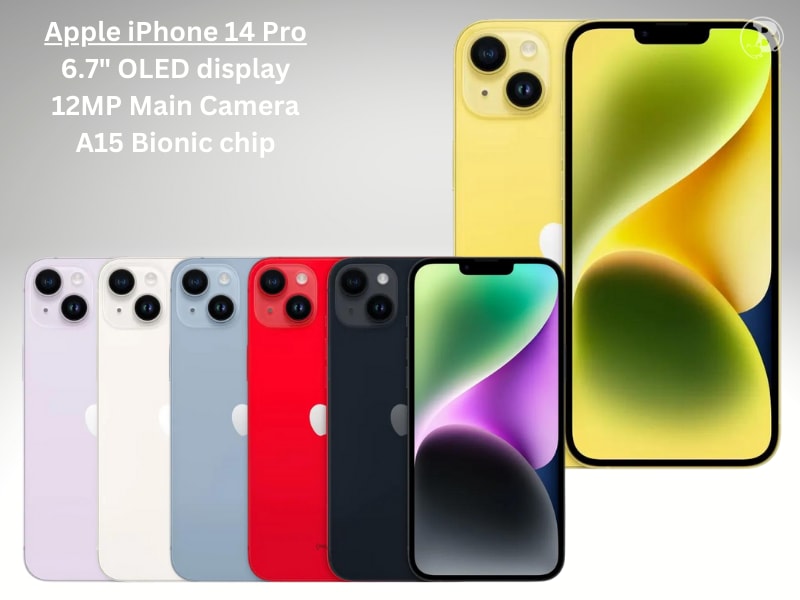
The most notable difference is the bigger and slightly sharper display measuring 6.7 inches. Which is the same size as the pricier iPhone 14 Pro Max.
But while the screen is the same, the internals are different from the flagship model. The iPhone 14 Plus has the same processor as the iPhone 14, the A15 Bionic chip. It comes with 6GB RAM built-in and has storage options from 128GB – 512GB.
Compared to the iPhone 14 Pro Max though, it doesn’t have Dynamic Island, AOD support, or a 120Hz Pro Motion refresh rate. It’s like the iPhone 14, with the exception of the bigger screen.
And since it is a bigger phone, the iPhone 14 Plus has a larger battery capacity. It can last up to 26 hours on a single charge. This is 6 hours more than the regular iPhone 14’s battery life and 3 hours more than the smaller, but pricier iPhone 14 Pro.
The cameras are the same 12MP main and ultra-wide shooters for the last few iPhone generations. They’re great shooters, but not as advanced as Android phones that are at the same price point.
Still, Apple’s photo and video processing is among the best in the Smartphone market. The iPhone 14 Plus is no exception in this.
Thus, the iPhone 14 Plus is the best option if you want an iPhone with extra screen real estate. It’s not as powerful or flashy as the iPhone 14 Pro Max, but it still has a great screen and powerful performance.
The best part is that the iPhone 14 Plus is more affordable than the pricey iPhone 14 Pro Max which will cost you at least RM1,200 more.
Pros:
- Large & sharp 6.7-inch display
- Long lasting 26-hour battery life
- Many color options to choose from
- Same processor as iPhone 13 Pro (A15 Bionic)
- With built-in crash detection support & safety features
Cons:
- Still expensive
- No fast refresh rates
- A bit too basic for the price
3. Samsung Galaxy S23 Ultra – Best Premium Android Smartphone
The Samsung Galaxy S23 Ultra is one of the most premium Android Smartphones in the market today. For this premium build and performance, comes a hefty price tag too.
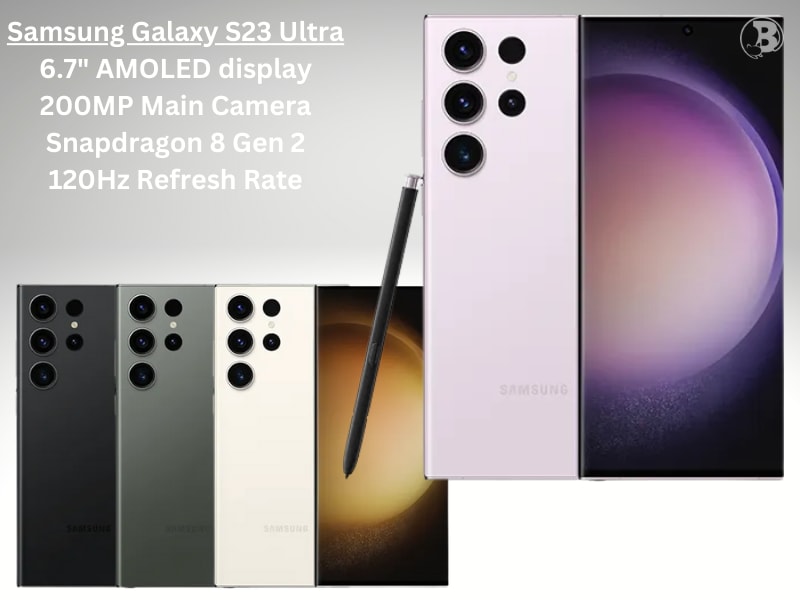
Starting with the screen, the Galaxy S23 Ultra has a 6.8-inch AMOLED with a razor-sharp 3088 x 1440 resolution. It also supports a 120Hz refresh rate for fluid motion and scrolling.
And it comes with the latest Snapdragon 8 Gen 2 processor with 12GB RAM and 256GB – 1TB storage options. This is the latest flagship processor and since Samsung has done away with the Exynos processors for global models, Malaysians can enjoy the full power of the Galaxy S23 Ultra.
The star of the show though is the new camera setup. The Galaxy S23 Ultra features an impressive 200MP main camera and three additional cameras; 12MP ultrawide and a pair of 10MP telephoto lenses.
This is the first Samsung smartphone to feature a 200MP camera and it can capture really detailed, high-resolution photos. But it doesn’t work as well at night, so you’ll need to switch over to a lower resolution.
You can choose from 12MP, 50MP, and 200MP resolutions on the main camera.
Compared to last year’s model, the Galaxy S22 Ultra, the S23 Ultra features an improved 200MP main camera, the Snapdragon 8 Gen 2 chip, faster RAM/storage, and Gorilla Glass Victus 2 for improved durability on the screen and rear.
In a nutshell, the S23 Ultra isn’t too different from last year’s model. So, it doesn’t make sense to get one if you already have the S22 Ultra. But if you haven’t bought a new phone in the last few years, the Galaxy S23 Ultra is an ‘ultra’-premium smartphone in every category.
It’s got the latest camera setup, a powerful overclocked processor, improved durability, and a clean, attractive design. As long as you can afford it as it costs between RM5600 – RM6200.
Pros:
- Stunning 6.8-inch AMOLED Display
- Overclocked Snapdragon 8 Gen 2 Processor
- Comes w/ the S-Pen
- High spec main camera (200MP)
- Improved night-time photography/videography
Cons:
- Expensive
- Can be too big for some people
- Very similar to last year’s Galaxy S22 Ultra
4. OnePlus 11 – Best Value-for-Money Flagship Android Smartphone
We have to say that the OnePlus 11 is one of the most impressive devices from OnePlus in the last few years.
It’s a good balance of performance and flagship features but at an affordable price. Typical flagships can cost up to RM4,000 – RM5,000 depending on the model.
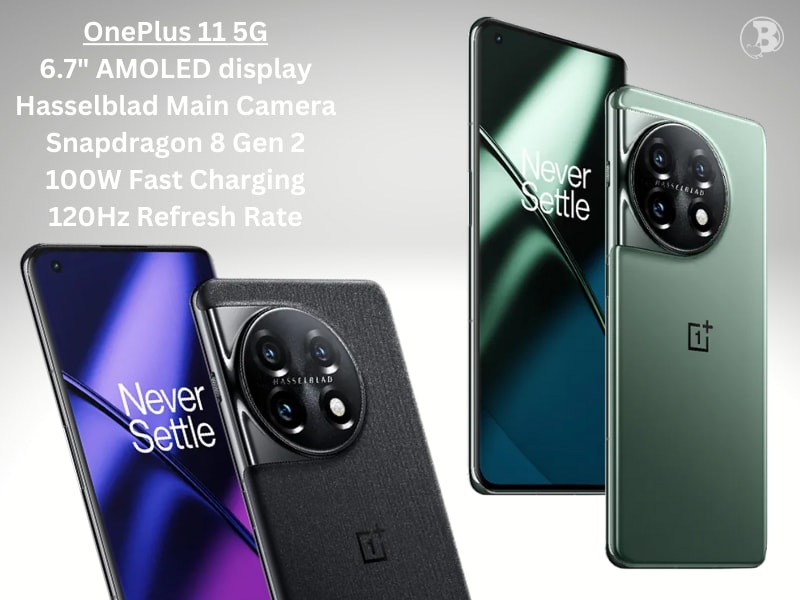
But the OnePlus 11 only costs around RM3,300 – RM3,600.
At this price point, the OnePlus 11 has a 6.7-inch AMOLED display with a 3216 x 1440 resolution. This is slightly sharper than the Samsung Galaxy S23 Ultra. It also supports a 120Hz refresh rate.
Along with this, the OnePlus 11 has an impressive triple camera setup with a 50MP main camera, a 48MP ultrawide, and a 32MP telephoto lens. The cameras are tuned by Hasselblad which improves colour vibrancy and HDR.
Plus, the OnePlus 11 features the flagship Snapdragon 8 Gen 2 processor, similar to the one on the pricier Galaxy S23 Ultra. The difference is that the S23 Ultra features a customized, ‘overclocked’ variant which makes it faster and more efficient than the OnePlus 11.
On another note, the OnePlus 11 comes with either 8GB/16GB RAM and has storage options up to 256GB. The downside for users who need a lot more storage is that there is no microSD card slot on this phone.
Additionally, OnePlus is recognized for its fast charging, but the OnePlus 11 takes it to another level. It supports SUPERVOOC 100W fast charge that can take the 5000mAh battery 0 – 100% in just 30 minutes.
Compared to the previous model, the OnePlus 10 Pro, the OnePlus 11 has the latest processor, a larger RAM variant, a better camera setup, and faster charging. The two smartphones are pretty identical, but the latest model is a step ahead in performance.
Because the OnePlus 11 is affordable, this makes it a great-value smartphone. It can do almost anything a pricier flagship can. The cameras are great, the performance is solid, and the screen is excellent.
There are a few missing features like wireless charging support and limited storage options, but if you can overlook that, the OnePlus 11 is a solid smartphone well worth its price.
Pros:
- An affordable price with flagship features (e.g., 120Hz refresh rate)
- 3rd Gen Hasselblad camera setup
- 6.7-inch high-resolution AMOLED display
- Super quick 100W charging support
Cons:
- Limited storage options
- No wireless charging support
- Large camera module can seem too big
5. Xiaomi 13 Pro – Best Camera Setup
Xiaomi’s latest flagship Smartphone is the Xiaomi 13 Pro and its camera setup is the main highlight of the phone.
The Xiaomi 13 Pro sports a triple 50MP Leica camera setup with an ultrawide and telephoto lens supporting the main shooter. The main 50MP sensor has a large 1-inch sensor to capture more light for more detailed, bright photos in dim light settings.
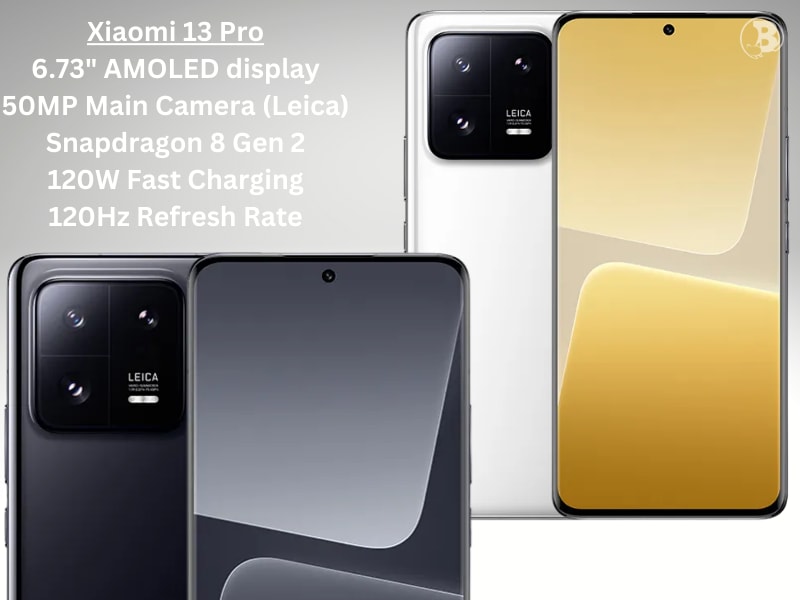
The selfie camera is dependable too, rocking a 32MP sensor that supports night mode and HDR.
Other than the cameras, the Xiaomi 13 Pro has the latest Snapdragon 8 Gen 2, a 12GB RAM capacity, and either 256GB or 512GB storage. Processing is smooth and it can handle heavy multitasking well.
And the display is a gorgeous 6.7-inch AMOLED panel with a 3200 x 1440 WQHD+ resolution. There is a 120Hz refresh rate for smooth motion and gaming. The display is immersive and colourful so it’s wonderful for watching movies and gaming.
Compared to the previous model, the Xiaomi 12 Pro, the 13 Pro has a much brighter display, faster storage and processor, and a more rounded-out camera array. It also has IP68 dust and water resistance, a missing feature with last year’s model.
We think that the Xiaomi 13 Pro right now, is the better smartphone and a substantial upgrade over last year’s model.
The only problem with the Xiaomi 13 Pro is the OS. MIUI isn’t the most user-friendly (or attractive) so it can be frustrating. There’s a ton of bloatware, and weird MIUI features like an iPhone-style control centre. So, the user interface (UI)can feel cluttered.
If you’re a fan of cleaner and simpler interfaces, then the Xiaomi 13 Pro might not be for you.
But otherwise, the Xiaomi 13 Pro is a formidable performer for both multi-tasking and photography. It is not cheap. Pricing starts at RM4,599.
Pros:
- Impressive 50MP triple Leica camera array
- Flagship processor & storage capability
- Sharp and vibrant display
- 120W fast charging (0-100% in 20 minutes)
- Dedicated cooling system built-in
- Sound battery life
Cons:
- MIUI is unnecessarily complex (e.g., bloatware)
- Expensive
- Only dual speaker setup
6. Apple iPhone 13 Pro Max
The latest and greatest iPhone to date:
Apple’s iPhone 13 Pro Max shares the same overall design as the iPhone 12 Pro Max, with a notably smaller front camera notch (although it’s still an annoyance for some).
It also has a polished steel side finish, which does look very premium, but finds itself covered in fingerprints more often than not.
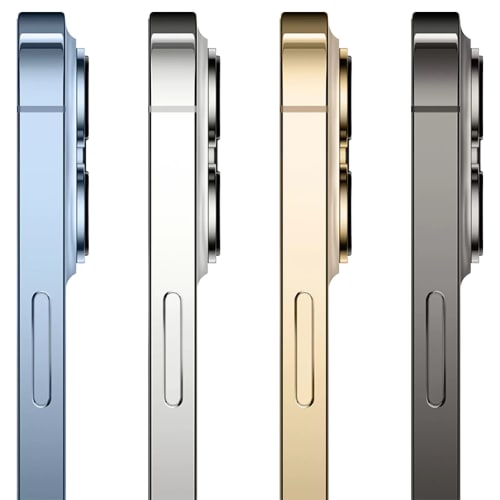
The selling point of the iPhone 13 Pro Max is its upgraded camera, offering excellent capture and video quality, alongside Dolby Vision HDR.
It also has a significantly improved battery life, direct comparisons see a 15% increase of battery capacity between the iPhone 13 Pro Max and the iPhone 12 Pro Max (4,352mAh vs 3,687mAh).
Other upgrades over last year’s edition includes a newer, more powerful chipset (the A15 Bionic).
And the new display with ProMotion technology intuitively sets the refresh rate between 10Hz to 120Hz according to your usage (I.e. saves battery).
These features make the iPhone 13 Pro Max a solid option for gaming on the go.
At the moment, the iPhone 13 series are the only iPhone range with the Cinematic mode (1080p, 30FPS)! And they are noticeably heavier than the 12 series owing to their larger battery capacity.
Verdict – Best For Videographers
If you can stomach it’s absurd RM5,000 asking price and don’t mind buying into the Apple’s insular ecosystem (which means proprietary accessories and repairs only):
The iPhone 13 Pro Max offers an amazing camera, quality display, long-lasting battery life and a smooth experience, whether you’re browsing YouTube or playing a few games.
It’s pretty much Apple’s best iPhone ever, until the iPhone 14 Pro Max comes out that is.
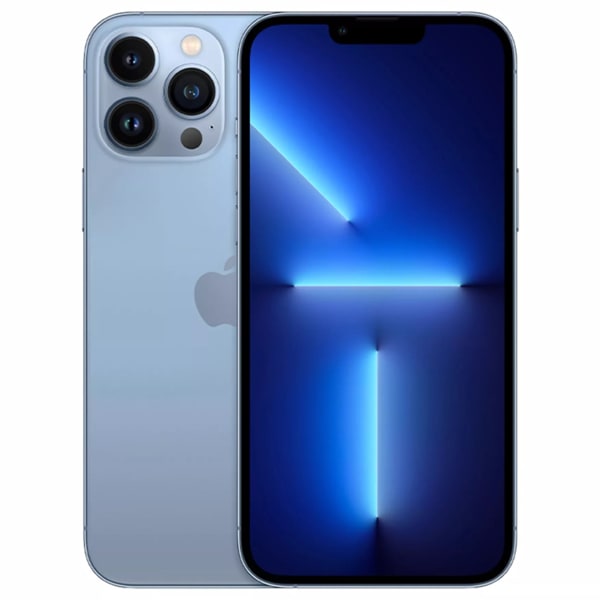
- Display: 6.7″ Super Retina XDR OLED 120Hz (1284 x 2778), 1000 nits
- Weight: 240g
- Dimensions: 160.8 x 78.1 x 7.7 mm
- OS: iOS 15
- CPU: Apple A15 Bionic
- RAM & GPU: 6GB; Apple GPU 5-core
- Storage: 128GB / 256GB / 512GB / 1TB (Not Expandable)
- Battery: 4,352 mAh
- Rear Camera: 12MP (ƒ/2.8) + 12MP (ƒ/1.5) + 12MP (ƒ/1.8)
- Front Camera: 12MP (ƒ/2.2)
- IP Rating: IP68
- SIM Card: Dual SIM (nano-SIM and eSIM)
- Warranty: 1 Year
- Price: From RM5,299
Pros:
- 5G-Compatible
- Up to 1TB of internal storage
- Exceptional camera quality (w/ Dolby Vision HDR)
- Large 6.7” screen
- Speedy, smooth response
- High-quality screen
- Sturdy-build
- Great for intensive mobile games
- Dust, spill and water resistant (IP68)
- Long-lasting battery (28 hours video playback)
Cons:
- Exceptionally expensive
- No charger provided
- Limited to internal storage (No SD Card slot)
- Not 3rd party repair-friendly
- No 3.5mm audio jack
- Very much locked into Apple’s ecosystem.
- Stainless steel casing attracts fingerprints
- Cameras still protrude from the back
7. Samsung Galaxy S22 Ultra 5G
Touting one of the largest screens (6.8”) for a Smartphone ever, the Samsung Galaxy S22 Ultra has some features to get excited about.
Firstly, the maximum brightness of the display now tops at 1750 nits instead of 1500 nits.
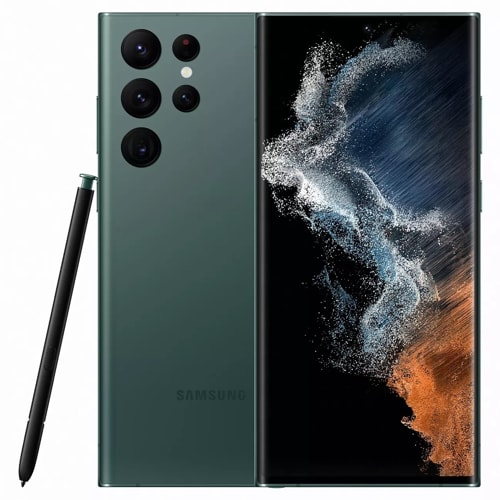
Secondly, this phone is able to play graphic-intensive games at high settings. It doesn’t heat up too crazy either.
It’s possible to get 8 hours’ worth of screen time with the Samsung Galaxy S22 Ultra as well even if the battery capacity is not as high as with the former generations of this phone.
It helps that the fast-charging capability has increased from 25W to an impressive 45W from the previous Samsung Galaxy S21.
Which ultimately sets the stage to run one of the world’s fastest processors, the Snapdragon 8 Gen 1 in combination with an Adreno 730. An update from the previous Snapdragon 888 + Adreno 660. You can well expect a higher level of performance from this phone.
Besides this, we have to mention the change to the overall design of the Samsung Galaxy S22 Ultra. It now bears an obvious boxy profile over the more rounded silhouette of the Samsung Galaxy S21.
The cameras by the way, are brilliant at taking night photos. Not forgetting that you still have decent image quality even after zooming up till 30x. After which, the image quality is not great.
Finally, the included S Pen will not only help you take advantage of the upgraded Notes application but also get all your daily tasks done more efficiently (e.g., take notes, manage your calendar, run presentations, translate, edit videos, etc).
Verdict – Best Telephoto Phone
If you can accept that this is a massive phone (and cumbersome to handle), the Samsung Galaxy S22 Ultra is a beast to reckon with, whether you use it for work or leisure!
- Display: 6.8″ Dynamic AMOLED 2X, 120Hz (1,440 x 3,088)
- Weight: 228g
- Dimensions: 163.3 x 77.9 x 8.9 mm
- OS: One UI 4.1 / Android 12
- CPU: Qualcomm SM8450 Snapdragon 8 Gen 1, Octa-core
- GPU: Adreno 730
- RAM: 8GB / 12GB
- Storage: 128GB / 256GB / 512GB (Not Expandable)
- Battery Life: 5,000 mAh
- Rear Camera: 108MP (f/1.8) + 10MP (f/4.9) + 10MP (f/2.4) + 12MP (f/2.2)
- Front Camera: 40MP (f/2.2)
- Dust/Water Resistant: IP68
- SIM Card: Dual Nano SIMs
- Warranty: 1 Year
- Price: ~RM5,099 – RM5,899
Pros:
- Huge AMOLED display with a fast 120Hz refresh rate
- With a very fast processor and good battery life (suitable for intense gaming)
- Superb fast charging (45W)
- Maximum storage is 512GB
- Great camera and gaming performance
- IP rating of 68 which means its dust and water resistant
Cons:
- Uncomfortably large to hold with one hand or in your pocket
- Not cheap (above RM5,000)
- No charger provided
- No microSD card slot
8. Apple iPhone 13 Mini
The Apple iPhone 13 Mini is the smaller, and cheapest version of Apple’s flagship phone for this year.
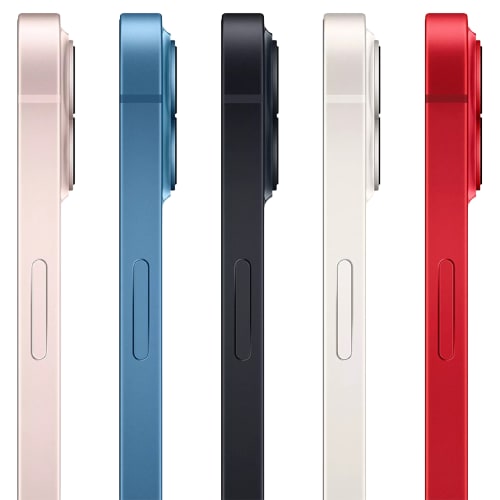
When compared to the mainline iPhone 13, the iPhone 13 Mini is smaller with only a 5.4” screen running at 60Hz (in-comparison to the Pro-range iPhones running at 120Hz).
The Mini is also lighter, weighing in at 140g in comparison to 173g.
Its smaller size does lead to it having a smaller battery as well, giving you about 17 hours of video playback on average. 2 hours less than the standard iPhone 13.
But apart from the above, the Mini is very much just a miniaturized version of the iPhone 13. Featuring an exceptional dual camera system, brilliant HDR display and the same Bionic A15 chipset as its larger counterparts.
As for how it holds up against the iPhone 12 Mini:
The iPhone 13 Mini offers a 10% increase in battery life (an additional 1.5 hours) with similar charge times, an improved chipset, and is just only 6g heavier than its predecessor.
The iPhone 13 Mini also has smaller front camera notch, and camera upgrades taken from last year’s iPhone 12 Max, such as sensor-shift image optical stabilization.
Verdict – Best Portable But Powerful Smartphone
Smartphones that can fit into your pocket are becoming rarer, even among Android Smartphones. And the iPhone 13 Mini is a very powerful phone for its size.
It’s also a more economical alternative if you still want to own Apple’s latest mobile device.
And if you previously passed on the iPhone 12 Mini because of the disappointing battery life, the iPhone 13 Mini is the solution.
Note: If you like macro photography, we recommend the iPhone pro series.
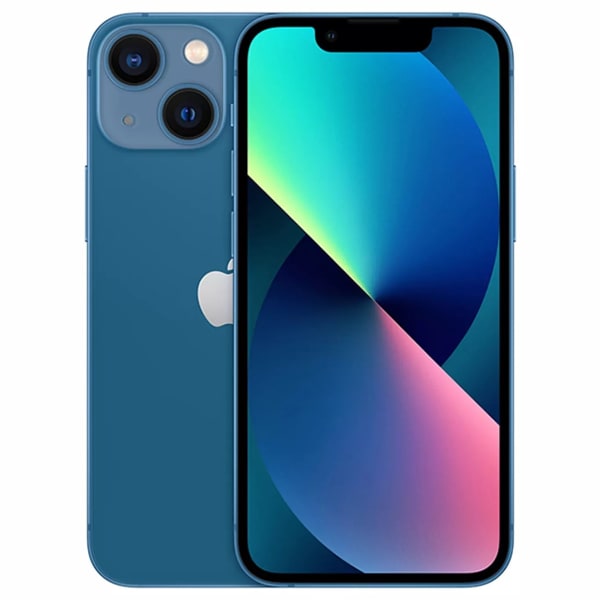
- Display: 5.4″ Super Retina XDR OLED 60Hz (1080 x 2340), 800 nits
- Weight: 141g
- Dimensions: 131.5 x 64.2 x 7.7 mm
- OS: iOS 15
- CPU: Apple A15 Bionic
- RAM & GPU: 4GB; Apple GPU 4-core
- Storage: 128GB / 256GB / 512GB (Not Expandable)
- Battery: 2,438 mAh
- Rear Camera: 12MP (ƒ/2.4) + 12MP (ƒ/1.6)
- Front Camera: 12MP (ƒ/2.2)
- IP Rating: IP68
- SIM Card: Dual SIM (nano-SIM and eSIM)
- Warranty: 1 Year
- Price: From RM3,399
Pros:
- Same chipset, RAM and GPU as the standard iPhone 13
- IP68 Rating
- Great battery life (up to 17 hours)
- Exceptional camera quality with Dolby Vision HDR
- Smooth, responsive display
- Lightweight
- Easily fits in your pockets
Cons:
- Still pricy for your average smartphone
- Screen is limited to a 60Hz refresh rate
- Limited to internal storage (No SD Card slot)
- Not 3rd party repair-friendly
- Restricted to Apple’s product ecosystem
- No charger provided
- No 3.5mm audio jack
9. ASUS ROG Phone 5
With its flashy aesthetic and sharp edges, the design of the ASUS ROG Phone 5 clearly has gamers in mind. Moreover, it has impressive specifications and RGB lighting to boot.
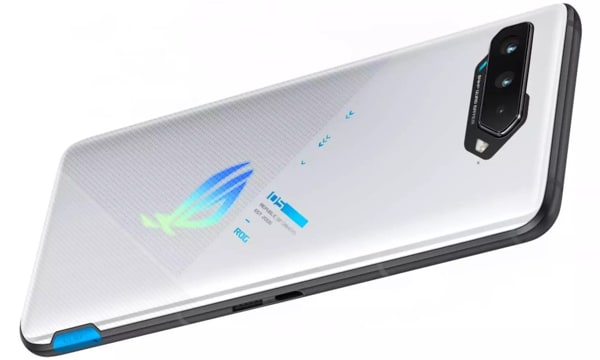
Compared to the previous ROG Phone 3, it has thinner bezels but an overall larger size.
At a baseline, the ROG Phone 5 offers a 144Hz 6.78” AMOLED display, all running on the Snapdragon 888 CPU, an Adreno 660 GPU with 8GM of RAM.
As such, you can expect a smooth 60FPS when running games such as PUBG or Genshin Impact. Even at max settings, which is something not a lot of other phones can offer.
ASUS also has a variety of accessories to complement the ROG Phone 5 – from a mobile cooling case to adaptive triggers.
The phone also offers 2 separate charging ports, the standard bottom one and a side port.
Apart from allowing you to game and charge, you can also plug 2 cables in to effectively double the charging speed if you so wish.
Verdict – Best Phone For Gaming
The ROG Phone 5’s attractive price and amazing specifications makes it our phone of choice for gaming on the go.
That being said, while the ROG Phone 5 has plenty of features for the avid gamer:
The camera quality isn’t the best, and many of the features aren’t a consideration if you simply want a plug-and-play experience.
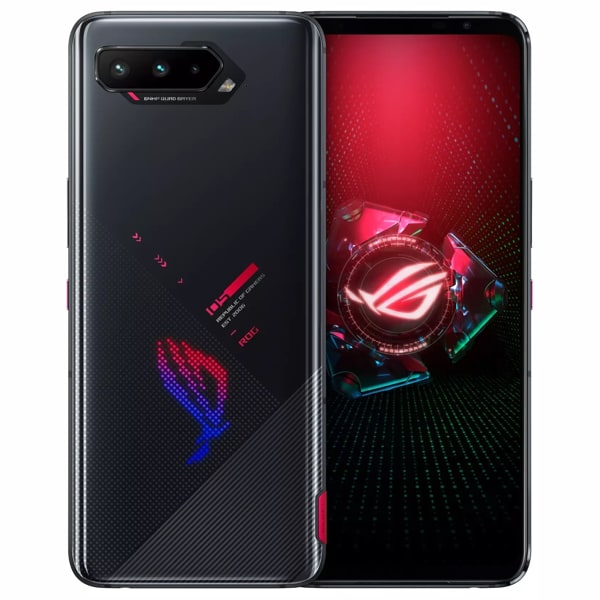
- Display: 6.78″ AMOLED, 1B colors, 144Hz (1080 x 2448); 800 nits
- Weight: ~238g
- Dimensions: 172.8 x 77.3 x 10.3 mm
- OS: ROG UI / Android 11
- CPU: Qualcomm SM8350 Snapdragon 888 5G, 8 cores
- GPU: Adreno 660
- RAM: 8GB / 12GB / 16GB
- Storage: 128GB / 256GB (Not Expandable), UFS 3.1
- Battery Life: 6,000 mAh
- Rear Camera: 64MP (f/1.8) + 13MP (f/2.4) + 5MP (f/2.0)
- Front Camera: 24MP (f/2.0)
- Dust/Water Resistant: –
- SIM Card: Dual Nano SIMs
- Warranty: 1 Year
- Price: ~RM2,499-RM3,499
Pros:
- Excellent for mobile gaming
- Balanced and comfortable ergonomics
- Works with a variety of gaming accessories
- Has 144Hz OLED Display
- Great CPU and GPU
- Large 6,000mAh battery
- 65W Fast Charging
- Comes with its own case
- Has a 3.5mm audio jack
Cons:
- Heavy
- Camera is only serviceable for its price range
- No SD Card slot
- Internal storage is comparatively low to similar offerings
- Not as suited as an ‘everyday’ phone
- Pro and Ultimate versions only offer more RAM
10. Xiaomi Mi 11
Mi 11 is Xiaomi flagship’s phone for 2021. What’s new with this model compared to its predecessor (Xiaomi Mi 10) lies in that shiny screen:
With 1B colors, increased resolution (1440p from 1080p), and a higher refresh rate (now 120Hz from 90Hz previously)!
Not forgetting the boost in performance (20%) from the upgraded CPU and GPU! Reading and writing is faster with the UFS3.1 (from UFS 3.0) too.
Other things worth noting is the faster charging time (55W now compared to 30W) including reverse wireless charging (10W from 5W).
If anyone cares, the whole phone is also thinner by 1mm than the previous model (Xiaomi Mi 10)! For all these changes however, the camera remains pretty much the same.
But we’re slotting this phone into our premium smartphone list anyways because it currently employs the most powerful Android chipset in the market (Qualcomm SM8350 Snapdragon 888 and Adreno 660)!
The performance of which, beats even Samsung’s latest chip (Samsung Galaxy S21) (*1)!
While still keeping things relatively affordable (less than RM3K)! If you’re a gamer and you like Android phones, you need to seriously consider this Smartphone!
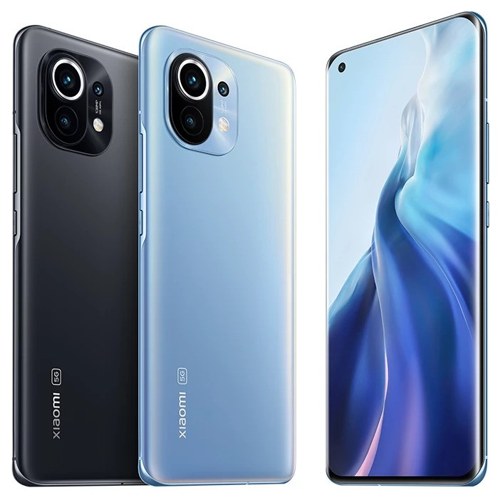
- Display: 6.81″ AMOLED, 1B colors, 120Hz (1440 x 3200)
- Weight: ~196g
- Dimensions: 164.3 x 74.6 x 8.1 mm
- OS: MIUI 12.5 / Android 11
- CPU: Qualcomm SM8350 Snapdragon 888 5G, 8 cores
- GPU: Adreno 660
- RAM: 8GB
- Storage: 128GB / 256GB (Not Expandable), UFS 3.1
- Battery Life: 4,600 mAh
- Rear Camera: 108MP (f/1.9) + 13MP (f/2.4) + 5MP (f/2.4)
- Front Camera: 20MP (f/2.2)
- Dust/Water Resistant: –
- SIM Card: Dual Nano SIMs
- Warranty: 1 Year
- Price: ~RM2,799-RM2,999
Pros:
- Nice display
- Excellent performance
- Quality build
- Great speakers
Cons:
- No IP rating
- Finger print scanner is average at best
- Camera is nothing fancy
- There is no 3.5mm audio jack
Best Smartphone Malaysia Below RM2,000
11. POCO F4 GT
Best Budget For Gaming Smartphone:
If you have the budget for it (~RM2,000):
The POCO F4 GT is an incredible value option for gaming enthusiasts since it features an AMOLED display with 120Hz – You can watch all your favorite HDR streaming content on that vibrant AMOLED display of the POCO F4 GT as it has HDR support, by the way.
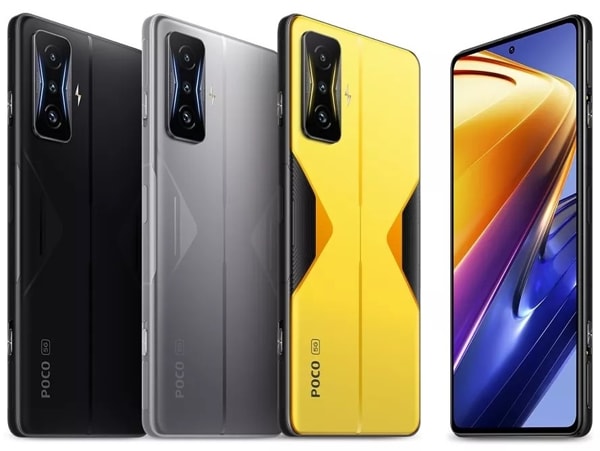
Additionally, there’s also the LiquidCool Technology 3.0 which does help a lot in keeping the phone cool during gaming sessions.
Together with top of the line, Snapdragon 8 Gen 1 and Adreno 730 chip set and an adaptive refresh rate to save on power, the POCO F4 GT is well-equipped to smoothly run even resource-intensive games like Genshin Impact.
Moreover, with the 120W fast charging behind this phone, you have no reason to completely drain that 4,700 mAh battery.
As for other features like the camera set up, this is led by a 64MP rear camera which is also seen in other Smartphones around the RM1,000-mark.
If you’re used to headphones, it might be a disappointment that the POCO F4 GT doesn’t have a 3.5mm jack. But sound-wise you needn’t fret as the POCO F4 GT has its own top and bottom stereo speakers.
Verdict – Best Budget For Gaming
POCO F4 GT is stellar value for money if you want a gaming Smartphone around a RM2,000 budget. Just don’t have it anywhere near water as it doesn’t have any IP rating whatsoever.
- Display: 6.67″ AMOLED, 120Hz (1,080 x 2,400), 800nits
- Weight: 210g
- Dimensions: 162.5 x 76.7 x 8.5 mm
- OS: MIUI 13 / Android 12
- CPU: Qualcomm SM8450 Snapdragon 8 Gen 1, 8 cores
- GPU: Adreno 730
- RAM: 8GB / 12GB
- Storage: 128GB / 256GB (Not Expandable), UFS 3.1
- Battery Life: 4,700 mAh, Fast charging 120W
- Rear Camera: 64MP (f/1.9) + 8MP (f/2.2) + 2MP (f/2.4)
- Front Camera: 20MP (f/2.4)
- Dust/Water Resistant: –
- SIM Card: Dual Nano SIMs
- Warranty: 1 Year
- Price: ~RM1,999 – RM2,199
Pros:
- Able to run image-intense games like Genshin Impact lag-free
- 120W fast charging
- Almost flagship worthy display
- Magnetic trigger buttons are fun
- Can be seen outdoors (maximum brightness of 800nits)
- Competitive price
- With HDR support
- Commendable stereo speakers
Cons:
- No IP Rating for this price tag
- No 3.5mm jack
Best Smartphone Malaysia Below RM1,500
12. Redmi Note 10 Pro
Oddly about the same price as its predecessor, Redmi Note 9 Pro:
The first thing you might notice is the higher display quality as the Redmi Note 10 Pro has an AMOLED screen. With a not-so-impressive refresh rate of 120Hz.
There is improvement in the CPU, upgraded from Qualcomm Snapdragon 720G to Qualcomm SM7150 Snapdragon 732G. With no change to the GPU (still Adreno 618).
And its fast charging capability is 3W more than what it was in the Redmi Note 9 Pro.
This model also sees a switch for a better rear camera! But keeps the front camera of the previous model.
In fact, this is our pick for the best budget phone with great camera performance. Because you can’t find a phone at this price with its 108MB rear camera!
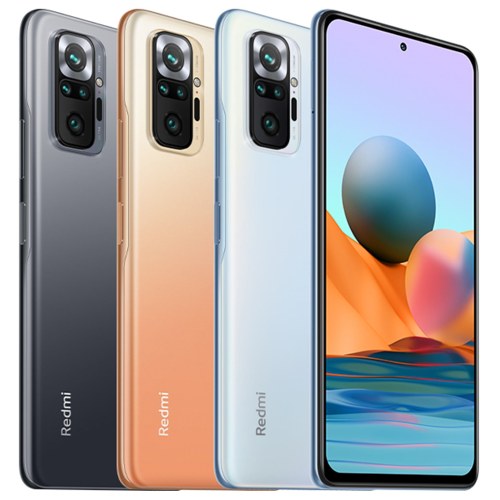
- Display: 6.67″ AMOLED, 120Hz (1,080 x 2,400)
- Weight: ~193g
- Dimensions: 164 x 76.5 x 8.1 mm
- OS: MIUI 12 / Android 11
- CPU: Qualcomm SM7150 Snapdragon 732G, 8 cores
- GPU: Adreno 618
- RAM: 6GB / 8GB
- Storage: 128GB (Expandable), UFS 2.2
- Battery Life: 5,020 mAh
- Rear Camera: 108MP (f/1.9) + 8MP (f/2.2) + 5MP (f/2.4) + 2MP (f/2.4)
- Front Camera: 16MP (f/2.5)
- Dust/Water Resistant: IP53
- SIM Card: Dual Nano SIMs
- Warranty: 1 Year
- Price: ~RM999-1,099
Pros:
- Great screen AMOLED 120Hz
- Superb battery life
- Rating of IP53
- Inexpensive
- Good camera for the price you pay
Cons:
- It is possible to get a better chipset in this price range
- Not for gamers
- Not 5G capable
- Only UFS2.2
Best Budget Smartphone Malaysia Below RM1,000
13. Poco X4 Pro 5G
Against the Xiaomi Poco X3 Pro, the lighter weight (10g difference) and thinner body (1.3mm difference) of the new Xiaomi Poco X4 Pro 5G is barely perceivable.
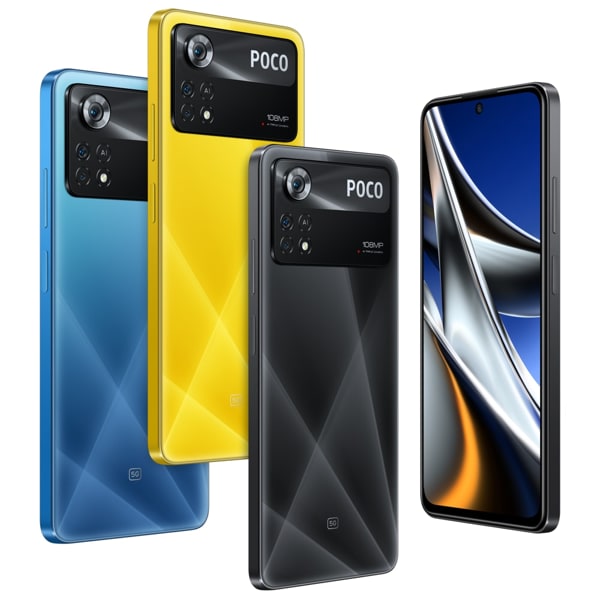
But there’s now an AMOLED display in place of the previous IPS LCD display. Most impressively, this shiny new display can reach a peak of 1200 nits! Alas, there’s no HDR support.
However, backing the Xiaomi Poco X4 Pro 5G is Snapdragon 695 – a significant downgrade from the Snapdragon 860 in the Xiaomi Poco X3 Pro. Which means this is not the phone for gamers.
Moreover, the UFS3.1 has been switched with a UFS2.2.
And while the main camera has improved (48MP to 108MP), the front camera has not (20MP to 16MP) although the 16MP front camera is good enough for your casual selfies.
Want to shoot 4K videos? You can forget that with the Xiaomi Poco X4 Pro 5G as it shoots a maximum of 1080p for video recording (including ultra wide).
It’s also worth noting that the Xiaomi Poco X4 Pro 5G is capable of 67W fast charging where the Xiaomi Poco X3 Pro is not (33W fast charging).
Verdict – Best Budget With Great Performance
Xiaomi Poco X4 Pro 5G is a cheaper alternative for the Redmi Note 11 Pro 5G, but fails to be a significant upgrade over the Xiaomi Poco X3 Pro because of the inferior chipset (i.e., no 4K video recording, slower gaming performance, poorer camera performance, etc).
Its one saving grace is that it does have 5G which the Xiaomi Poco X3 Pro does not. Although this is arguable still not an important factor in Malaysia.
Introducing The New Xiaomi POCO X4 Pro 5G
- Display: 6.67″ AMOLED, 120Hz (1080 x 2400) 700-1200 nits
- Weight: 205g
- Dimensions: 164.2 x 76.1 x 8.1 mm
- OS: MIUI 13 / Android 11
- CPU: Qualcomm SM6375 Snapdragon 695 5G, 8 cores
- GPU: Adreno 619
- RAM: 6GB / 8GB
- Storage: 128GB / 256GB (Expandable via MicroSD), UFS 2.2
- Battery Life: 5,000 mAh, Fast charging 67W
- Rear Camera: 108MP (f/1.9) + 64MP (f/1.8) + 8MP (f/2.2) + 2MP (f/2.4)
- Front Camera: 16MP (f/2.5)
- Dust/Water Resistant: IP53
- SIM Card: Hybrid Dual Nano SIMs
- Warranty: 1 Year
- Price: ~RM999-RM1,199
Pros:
- With a 3.5mm jack
- Supports NFC
- Rated for IP53 (resistances against dust and light splashes)
- Good battery life
- Striking reflective back panel
- AMOLED display with fast refresh rate 120Hz
- With ultra-wide lens (8MP)
- Stereo speakers (top and bottom)
- Very responsive fingerprint scanner (power button)
- Decent 16MP selfie camera
- Fast charging at 67W (price includes charger)
- Main camera performs well at night
Cons:
- Screen refresh rate does not automatically adjust to save power
- No HDR support
- Ultra-wide lens performance is poor in dim light
- Not suitable for gamers
- Headphone jack placement is at the top
More choices of the best budget smartphones.
How To Choose The Best Smartphone
1. Operating System: Android Or Iphone
A phone’s operating system is the built-in software that drives and manages the functions of the phone.
There are 2 main operating systems that dominate the market, iPhone and Android.
What is the difference between these 2 operating systems?
iPhone (aka iOS):
- Arguably more intuitive and thus, easier to use
- Better security
- Works well with other Apple devices
- Regular software updates
Android:
- Generally cheaper than an iPhone
- Customize-able
- Meant to integrate with Google services
So if you already have many Apple devices, it makes sense to go with an iPhone.
While an Android would be best if you frequently use Google services and Microsoft Office.
And if you have wireless earphones, you should check which operating system works better with them!
2. App Support
Don’t forget to list down the apps you use often! Chances are, there will be a similar version available regardless if you choose iPhone or Android!
Take a peek at the respective app stores to see if they have the apps you use!
- Android – playstore
- iPhone – appstore
3. Screen Size
Firstly, screen size is measured from corner to corner. Rather than from top to bottom.
If you’d like to carry your phone around in your pocket, a smaller screen size (<5.5 inches) will do. And you will be able to use it comfortably with one hand too.
4K resolution is overrated:
As you can always connect to a Smart TV or use a TV box if you want a bigger screen than what’s available in the Smartphone market!
4. Built-In Storage Space
Go for a Smartphone that has a minimum of 64GB of storage. To keep apps, music, photos and videos.
Something to note:
With iPhone, there’s no option to increase the built-in memory (i.e. they don’t have microSD slots). Models with bigger memory storage cost more upfront.
5. Cameras
There is a saying that the best camera is the one that you have in your hand! And Smartphones are definitely more portable than conventional cameras.
Look for wide aperture for better low light performance, night mode, noise reduction and optical image stabilization.
iPhones have particularly great cameras compared to other Smartphones!
Note: Higher megapixel count doesn’t necessarily mean that the camera is good.
6. Battery Life
Apps (especially games), phone calls, etc can use up battery fast!
As a rule of thumb, do not accept a Smartphone that only lasts for less than 10 hours on full charge.
The average battery life of Smartphones is between 8 to 18 hours. Which is plenty to use anywhere! Including on the best treadmill or when you’re outside!
Fast charge is a handy feature to have because you don’t have to wait long to use your phone again!
7. Budget
Everyone knows that iPhones and the premium Samsung phones are some of the most expensive phones around.
And at the other end of the spectrum, there is Huawei, Realme and Xiaomi with their more affordable phones. Although Huawei has high range phones too!
8. Other Features To Consider
- Fingerprint or face scanning (for security) – Some of the best laptops have a fingerprint scanner too
- Personal assistant
- Cloud support (external memory backup)
- Availability of third-party apps
- NFC (Near Field Communication) – Allows compatible devices to exchange data, photos, etc
- 5G compatibility
Conclusion
The OnePlus 11 offers amazing value for money while the Xiaomi 13 Pro is a worthy contender for photography enthusiasts.
But if you’re stuck on Samsung or Apple, the best models that you can currently buy are the Samsung Galaxy S23 Ultra and iPhone 14 Pro respectively.
Although, it’s worth mentioning that the new iPhone 14 Plus offers buyers another option for something in between the iPhone 14 and iPhone 14 Pro.
Want a soundbar that works with your smartphone? See these soundbar reviews.
Further reading:
- 11 Best Smartwatches In Malaysia
- 9 Best Printers In Malaysia
- 9 Best Gaming Laptops In Malaysia
- 13 Best Dash Cams In Malaysia

